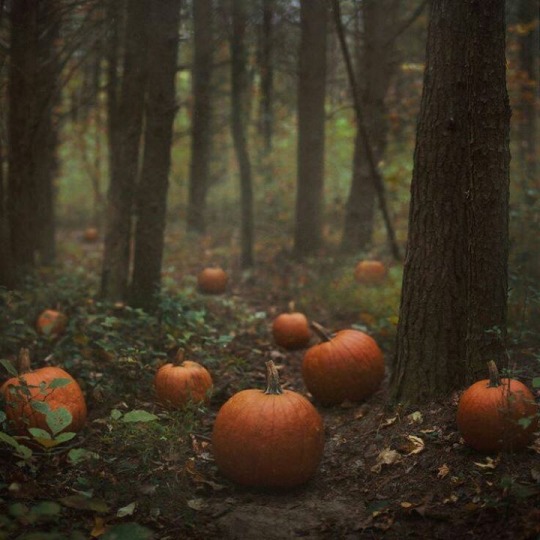Photo






DAVID TENNANT as The Tenth Doctor in “Daleks in Manhattan/Evolution of the Daleks”
1K notes
·
View notes
Photo

Julie Andrews and Christopher Plummer for The Sound of Music, 1965
1K notes
·
View notes
Text
Nannerl: The Mozart Musician Forced to Sit in Shadows
Leopold Mozart wrote glowingly of his gifted child. The letter was peppered with words like “genius”, “prodigy”, and he openly declared them "one of the most skillful players in Europe.” He wasn’t gloating; his child was armed with a musical ability that stunned prestigious audiences all over Europe. Sadly, it is accurate to say that this musician’s gift was snuffed out of history and has never been heard by modern ears. That is because in this letter Leopold was not talking about little Wolfgang, he was writing about his eldest child, his daughter Maria Anna.
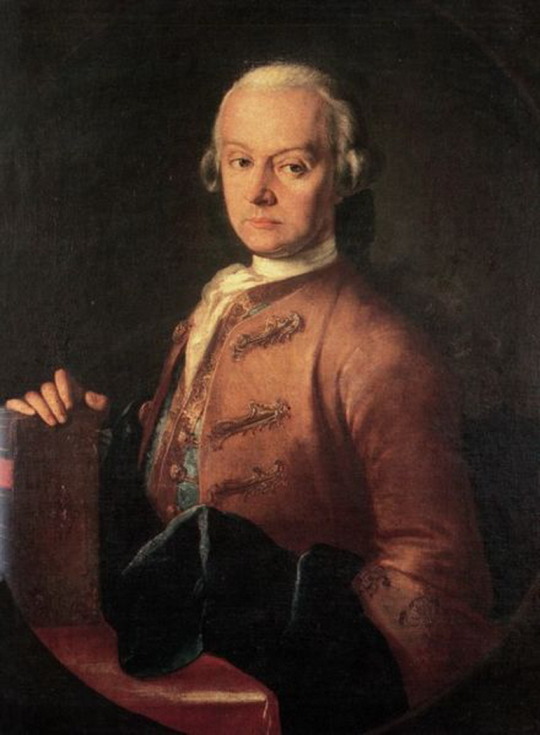
Leopold Mozart
Born in Salzburg, Austria on July 30th 1751, Maria Anna Mozart had music in her blood thanks to her father who was a composer, conductor, and an accomplished violin player. By the time she was seven years old Leopold had already taught his daughter how to play the harpsicord, a task he may have relished not only due to his profession, but because by the time little Maria Ann turned seven Leopold and his wife Anna Maria had already lost seven children. Only one other child survived along with Maria Anna, her younger brother, Wolfgang Amadeus Mozart.
Maria Anna, affectionately nicknamed Nannerl, proved early on that she was more than talented, she was a bona fide musical virtuoso. Able to absorb music as easily as taking a breath, Nannerl quickly learned complex musical pieces and began writing music of her own with her progress recorded in a notebook. At the onset of her learning, Wolfgang was only three years old and in these early years he was heavily exposed to every step of his sister’s education. The two Mozart children were very close, the pair regularly played in an imaginary “kingdom” where they occupied seats of fanciful royalty and they even created their own language. Wolfgang adored his older sister and as he watched her musical talent bloom some scholars believe it was his wish to be like her that sparked his interest in learning music for himself.

Portrait of Maria Anna “Nannerl” Mozart
When the young Wolfgang began attempting music like his sister the Mozart family was surprised to discover that they had not one prodigal child, but two. Taking selections out of Nannerl’s notebook, Leopold tested Wolfgang’s abilities and wrote in her pages “This minuet and trio were learned by Wolfgang in half an hour, at half-past nine at night on the 26th of January 1761, one day before his fifth birthday.” Because of his obvious talents Leopold started Wolfgang’s musical education early, beginning at only five years old.
On their own each of the Mozart children could display gifts that astonished even the most accomplished musicians, but together they were capable of wowing the world. Within three years the children, aged approximately eight and eleven, found themselves performing in Munich in front of the court of Prince-elector Maximilian III of Bavaria. Said one concert-goer “The poor little fellow plays marvelously, he is a child of spirit, lively, charming. His sister’s playing is masterly, and he [the prince] applauded her.” In 1763 Leopold wrote glowingly to a friend back home is Salzburg:
“We played a concert on the 18th which was great, everyone was amazed. Thank God, we are healthy and, wherever we go, much admired. As for little Wolfgang, he’s astonishingly happy, but also naughty. Little Nannerl is no longer in his shadow, and she plays with such skill that the world talks of her and marvels at her.”
In the summer of 1763 the Mozart family set out on their most ambitious endeavor, an eighty-eight city tour across western Europe, called the Grand Tour. The name of the tour was more than appropriate. Over the course of several years Nannerl and Wolfgang would play in front of everyone from common townspeople to royalty in performances that could exceed three hours. They were promoted as the “Wunderkinder”, with Nannerl being billed first above Wolfgang. As stated by one review written in 1763:
“Imagine an eleven-year-old girl, performing the most difficult sonatas and concertos of the greatest composers, on the harpsichord or fortepiano, with precision, with incredible lightness, with impeccable taste. It was a source of wonder to many.”
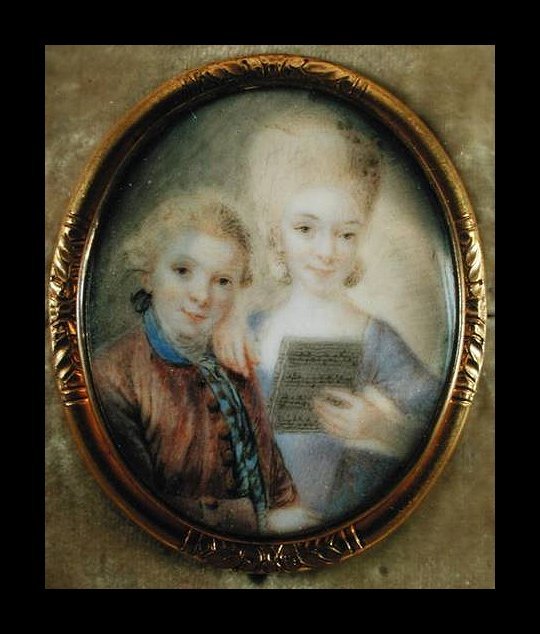
Portrait of the young Nannerl and Wolfgang Mozart
Their popularity steadily grew and the Mozart family quickly found themselves in a world of servants, gifts, and all manner of finery. The travel and fame filled their lives with happiness, but it also took an unavoidable physical toll.
Moving from city to city exposed the Mozarts to praise and prominence, but it also made them susceptible hosts for disease. While touring outside London Leopold fell ill and the Mozart children were told the temporary home had to be kept quiet. Unable to play their instruments the children decided to do the next best thing. Nannerl took up some parchment and the pair collaboratively wrote down Wolfgang’s first symphony with Nannerl remembering later how her brother told her “Remind me to give something good to the horns!” The illnesses eventually made their way to the children as well. In September 1765 what appeared to be a minor bug began to affect both Nannerl and Wolfgang but as time progressed the suspected cold grew worse and it was determined to actually be a severe case of typhoid. The disease wracked the children and it took them nearly four months to recover. But, despite the need for rest after recovery Leopold decided the tour needed to resume. The Mozarts did not return home to Salzburg until November 1766.
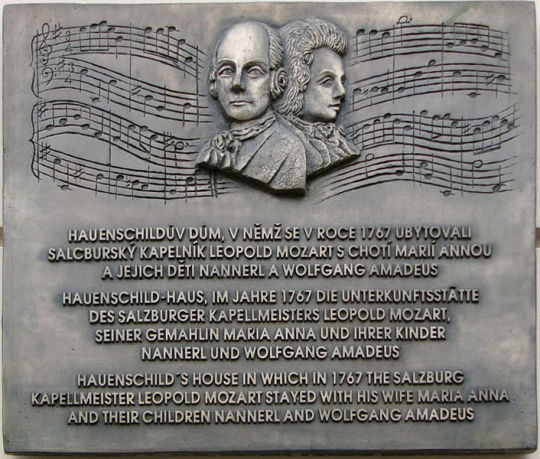
Modern day plaque in the Czech Republic marking a building where the Mozart family stayed while on tour in 1767.
Despite their working and sharing the stage together, there is little evidence that the Mozart siblings had any feelings of jealousy toward each other. In fact, it appears that it was the exact opposite between the two. They both reveled in the music and their abilities, collaborating and often encouraging each other. But, as time moved on their father began to see Nannerl as simply a part of a bigger picture and he began to focus his attention on Wolfgang. In approximately 1768-1769 Leopold decided it was time to once again bring the Mozart name on the road, but this time Nannerl was to remain in Salzburg. She would never tour again.
The reason for the eldest prodigy being left home while the younger Wolfgang went out into the world was as simple as it was sad. At the age of eighteen Nannerl was no longer seen as a wonder child prodigy, she was seen as a young woman who should be staying home and getting married. This decision from Leopold was never questioned. To the two Mozart children the word of their father was set in stone with Wolfgang writing in a later letter “Next to God comes Papa.” The loyalty Nannerl had for her father was absolute and when he and Wolfgang left on tour she waved goodbye while standing in place. The change was respected, but it was not unfelt by Wolfgang who wrote while touring Italy, “I only wish that my sister were in Rome, for this town would certainly please her.”
Many letters were exchanged between Nannerl and Wolfgang, and through some of this correspondence it becomes clear that Nannerl did not abandon her love of music. Leopold and Wolfgang sent her sheet music to study so the two siblings could play when he returned home but Nannerl took it a step further and continued to compose her own music which she sent to her brother out on tour. The support between the two is evident in a July 7th 1770 letter from Wolfgang to Nannerl where he praises the piece she sent to him:
“I am amazed! I had no idea you were capable of composing in such a gracious way. In a word, your Lied is beautiful. I beg you, try to do these things more often.”
The piece of music has never been found.

Painting of the two Mozart children playing together with their father looking on holding a violin.
As the Mozart children grew older their connections to their father took very opposite routes. Schisms between Wolfgang and Leopold began to grow as the roles of manager and father continued to blur. Wolfgang was Leopold’s livelihood and he attempted to direct him in all matters, but the son grew to resent him and he chose to go against his father’s wishes. When Wolfgang was twenty-one Leopold found him a position in Salzburg at the court of the prince-archbishop but Wolfgang refused it stating “The archbishop could not pay me enough for the slavery in Salzburg.” In approximately 1781 Wolfgang completely defied his father and left Salzburg for good in the pursuit of greater fame and fortune. Nannerl stayed behind, since their mother’s death in 1778 she had become Leopold’s sole caretaker and defying their father by leaving was not an option in her mind. Nannerl was completely devoted to Leopold and when Wolfgang left, she took her father’s side in the matter. The stepping out of Wolfgang marked a deep wound in the relationship between the siblings, one that would never fully heal. In 1783 Nannerl married Johann Baptist Franz von Berchtold zu Sonnenburg in a village twenty miles outside of Salzburg. She breifly returned to Salzburg in 1785 to have her son, the baby was named Leopold.
In a questionable move, Nannerl and her husband moved back to their home village shortly after the infant Leopold was born, but the baby was left behind with his grandfather. The elder Leopold may have been granted this custody in the attempt to cultivate another musical prodigy, but the plan never had a chance to develop. Leopold Mozart died in 1787 and the baby was returned to Nannerl and Johann.
Nannerl had two more children in 1789 and 1790 but by the time they were born her connection with her brother Wolfgang had ceased to exist. He had gotten married August of 1782 and visited his sister with his new wife in 1783, but after that the two never visited each other, their families never interacted, and it seems that their correspondence ceased completely by 1788. In 1791 Nannerl’s youngest child died in infancy and in 1801 her husband died leaving her with their two surviving children and four stepchildren from Johann’s previous marriage. She moved back to Salzburg with her family and found work as a music teacher.

Nannerl Mozart
The worlds of Nannerl and Wolfgang Mozart did not cross again until she reached old age. Wolfgang had died on December 5th 1791 but his widow, Constanze, got remarried to Georg Nikolaus von Nissen, and in 1820 they moved to Salzburg where she finally met again with her estranged sister-in-law. The meeting of the two women in the Mozart home city was not overly affectionate, but it was cordial enough that Nannerl agreed to help Constanze with the writing of a biography of Wolfgang, allowing her brother’s widow access to papers and letters written between the family members up until 1781.
In the last years of her life Nannerl’s health took a sharp decline with her losing her vision in 1825 and spiraling further into ill health for the next few years.
Maria Anna Mozart, musical prodigy, composer, world-renowned performer, and lead billing of the “wunderkind” duo of the Mozart children, died on October 29th 1829 at the age of seventy-eight.
Today the name Wolfgang Amadeus Mozart is synonymous with musical mastery but the sister that supported and may have inspired him is hidden deeper within the pages of his life. She lives on in portraits, letters, reviews, and concert billings, and yet her music that was praised all over the world has never been found. Although it is a possibility, we may never know for sure if any of her later compositions made it to the world stage through the performances of her once adoring brother.
Maria Anna Mozart was buried in St Peter’s Cemetery, located in her home city of Salzburg.
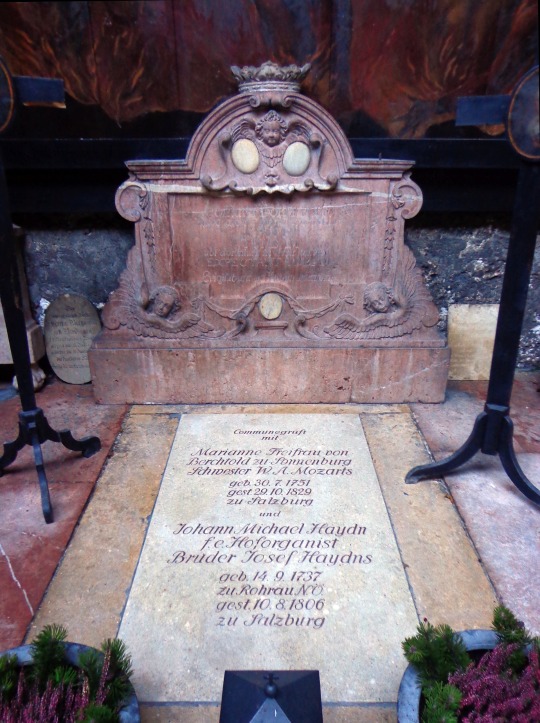
Communal vault where Maria Anna Mozart is buried.
996 notes
·
View notes
Text

Maria Anna Mozart, Wolfgang’s older sister and ‘idol’.
Maria Anna Mozart was,in addition to being an exceptionally talented musician and composer,the older sister of Wolfgang Amadeus Mozart. The more famous Mozart often referred to her as his inspiration and idol. But she went ahead to sacrifice the two loves of her life-Classical Music and a certain young Captain and tutor,just to suit her parent’s wishes.She got married to a much older widower of her father’s choice,eventually raising 4 stepchildren and 2 children. Classical Music Composer Maria Anna was thus erased from human 'His'tory and eventually overshadowed by the fame of her equally talented younger male sibling.
156 notes
·
View notes
Photo


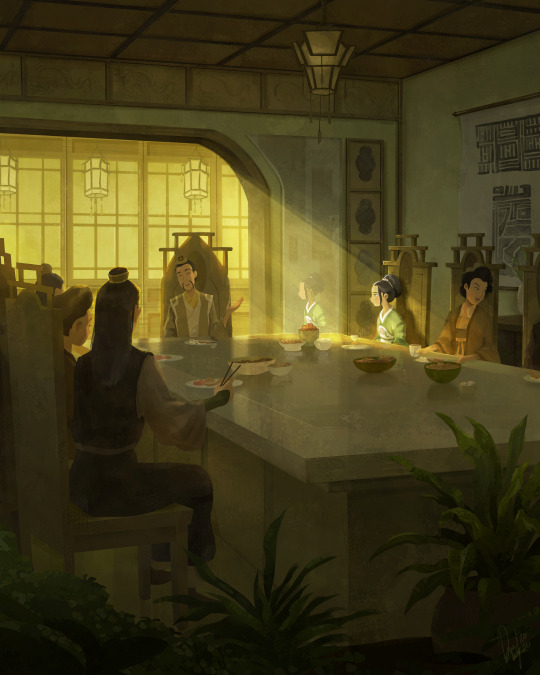


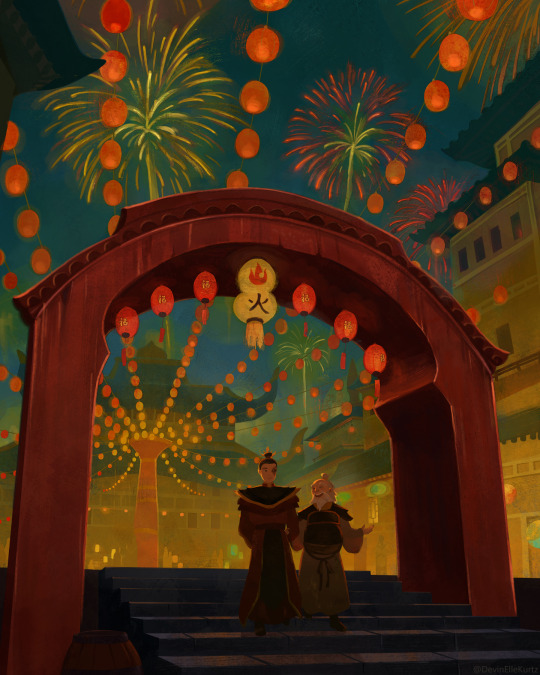
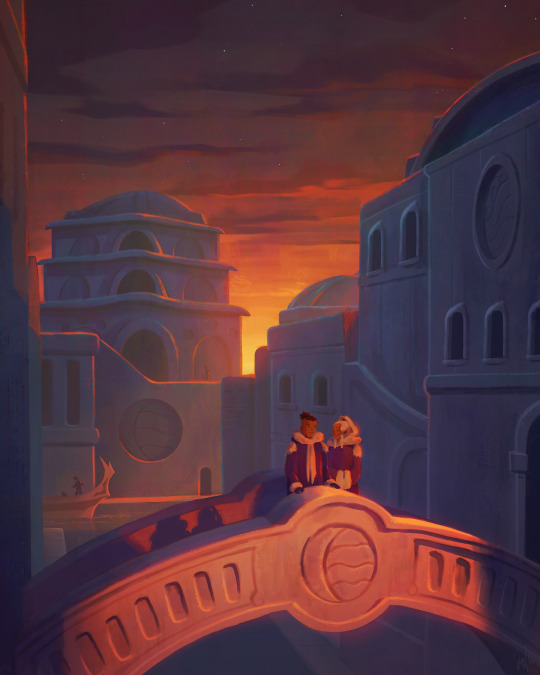
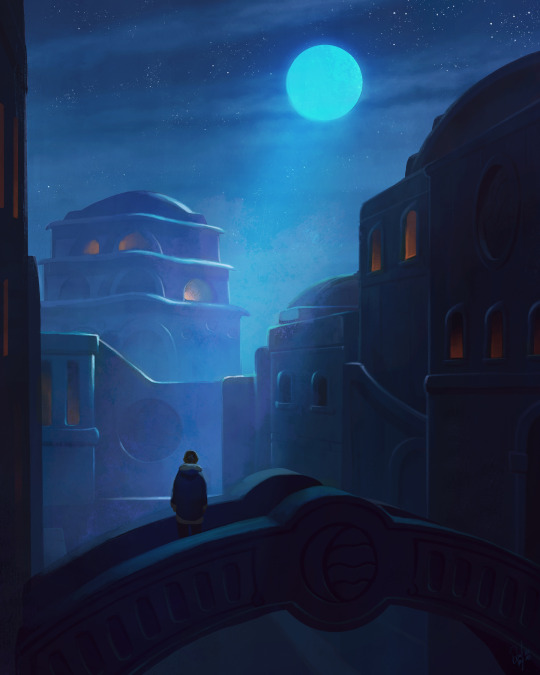
The story arcs of Avatar: The Last Airbender pt I
Original Art by Devin Elle Kurtz (me) Twitter | Instagram
65K notes
·
View notes
Text
reblog if you post any of the following:
(please only reblog if you post your own content!)
classical music (memes included)
music aesthetic
music history
women composers/musicians
Amadeus (1987), Victoria
any eastern european/slavic history (preferably before communism)
world history (1900s to today)
fashion history (before 1900s)
victorian era photography
literature
german, french, russian, polish
romantic era art
composers
213 notes
·
View notes
Photo

Nadia Boulanger (1887-1979) was a French composer and music teacher. She is best known for being the instructor of many legendary musicians of the 20th century, such as Astor Piazzolla, Philip Glass or Quincy Jones.
She started studying at the Paris Conservatoire at the age of 9, and was giving private lessons by the age of 17. She was a prolific composer, but her fame mainly came from being the private tutor of some of the best musicians of her time. Among her honours and awards were the Howland Memorial Prize and the Gold Medal of the Académie des Beaux-Arts of the Institut de France.
176 notes
·
View notes
Video
Piano Sonata In C Minor, Op. 21- III. Allegro
By Composer Cecile Chaminade
Louise Cheadle, Pianist
Artwork : “Lucie Leon At The Piano” (1892) By Artist Berthe Morisot
15 notes
·
View notes
Photo






The struggle for equal pay goes back further than you might think. This is the true story of how the brilliant composer Louise Farrenc fought for it in 1850, and won.
155 notes
·
View notes
Video
Kleiner Walzer In D Major, ITC 5 “Mi Teresita” (Little Waltz)
By Composer Teresa Carreño (1853-1917)
Gabriela Montero, Pianist
Artwork : “Lady at the Piano” By Artist Édouard Vuillard (French, 1868-1940)
176 notes
·
View notes
Text

If you’re not outraged, then you’re not paying attention.
4K notes
·
View notes
Photo


Clementina Maude (1822-1865) was an early British portrait photographer. She is considered an important figure of Victorian photography and has been praised for the artistic excellence of her work.
She produced around 800 photographs during her career, many of her teenage daughters. She was elected a member of the Photographic Society in London in 1863.
292 notes
·
View notes

